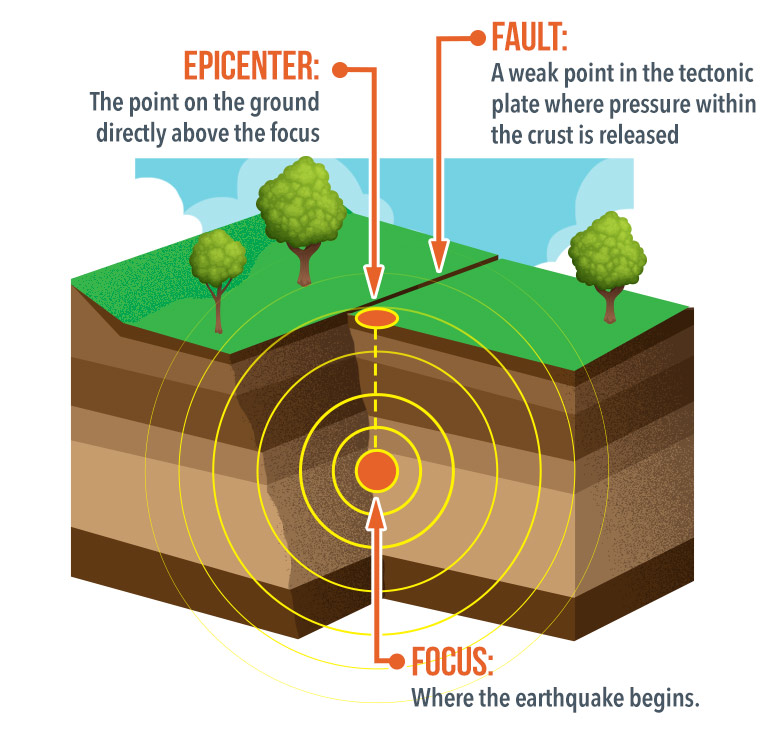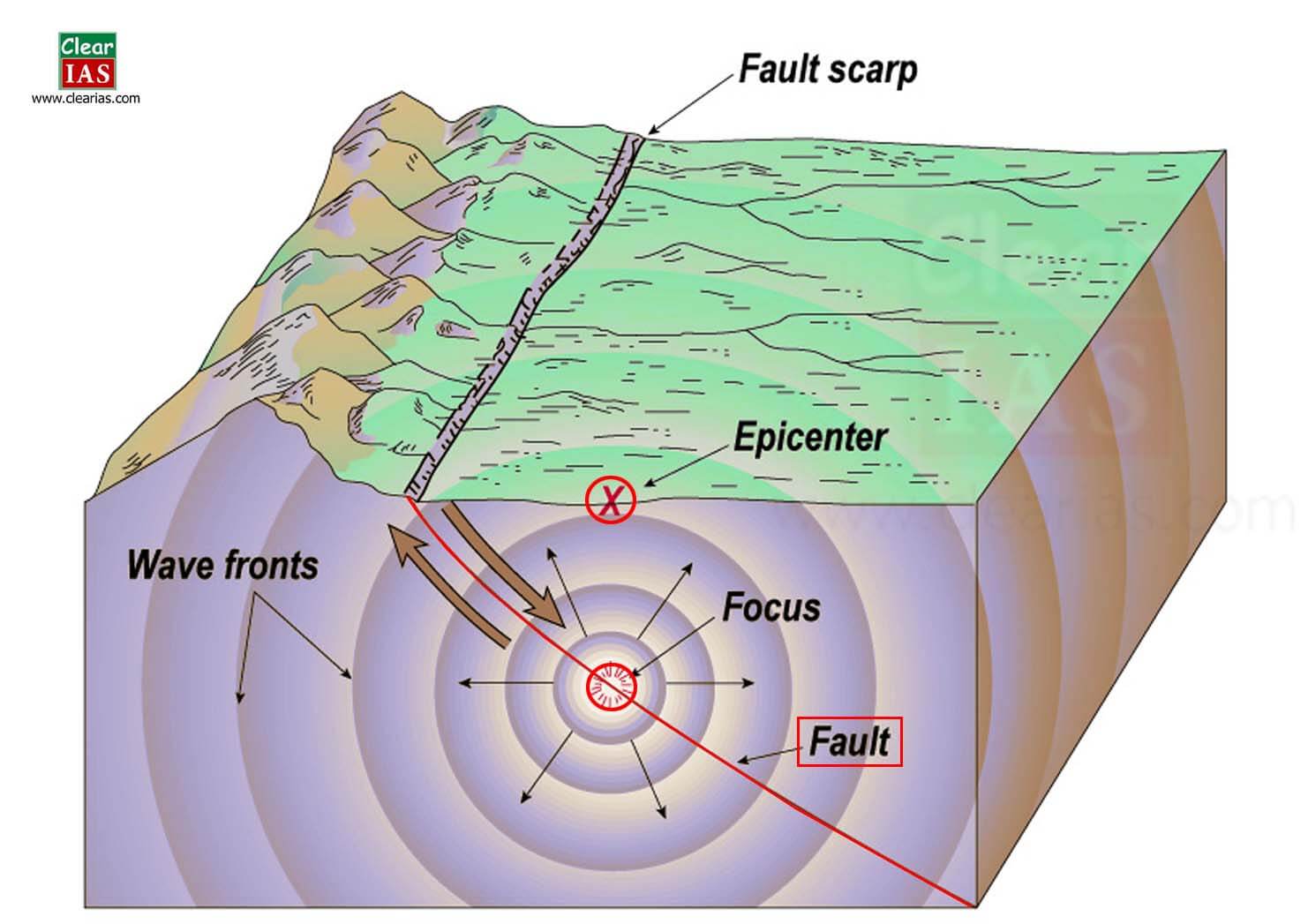
Decoding the Tremors: What It Feels Like When a Magnitude 5 Earthquake Strikes
Grasping the Sensation of a Moderate Seismic Event
Picture this: you’re standing firm on what you believe is unmoving ground, perhaps enjoying a quiet moment or deeply engaged in your daily routine. Then, a subtle vibration begins, almost mimicking the passage of a hefty vehicle nearby. Yet, this isn’t the familiar hum of traffic; it possesses a different quality, something deeper and more primal. This could very well be your initial clue that the very ground beneath you is awakening, a prelude to the experience of a magnitude 5 earthquake. While generally not unleashing catastrophic damage on well-built structures, a magnitude 5 tremor is undoubtedly a noticeable and often deeply unsettling occurrence.
This initial feeling often evolves from a gentle trembling into a more pronounced swaying or a rolling sensation. Objects in your vicinity might start to rattle — imagine pictures on the wall making soft clicking sounds, hanging lights swinging with a gentle arc, and unsecured items on shelves beginning to shift their position. The accompanying sound can also intensify, growing from a low rumble to a more distinct and sometimes quite alarming growl. It’s a subtle yet significant disruption of the everyday, a stark reminder of the immense forces contained within our planet.
For those inside buildings, the sensation can be akin to being aboard a vessel navigating somewhat rough waters. You might find yourself instinctively trying to maintain your balance, perhaps reaching out for support. The duration of this shaking can vary, but it typically persists for several seconds, possibly extending up to half a minute. While that duration might seem brief, when the ground is actively moving beneath your feet, each passing second can feel considerably longer.
Outdoors, the experience can present itself slightly differently. You might perceive a distinct jolt or a series of sharp, sudden movements. The ground itself might visibly undulate, like gentle waves rippling across a solid surface (a rather unnerving sight, wouldn’t you agree?). If you happen to be in a vehicle, you might feel it rock quite noticeably. The essential point is that a magnitude 5 earthquake is definitely something you will feel, and it will likely command your complete and undivided attention.
The Strength of the Shake: More Than Just a Little Wobble
Understanding the Power Behind a Magnitude 5 Event
Let’s be clear on one thing: a magnitude 5 earthquake isn’t just a minor tremor that you might easily overlook. It falls into the “moderate” category on the Richter scale (or more accurately, the moment magnitude scale we use today). This signifies that it releases a substantial amount of energy. While it’s significantly less potent than the truly devastating earthquakes that register at magnitude 7 or higher, it’s certainly strong enough to be widely perceived and capable of causing some degree of damage, particularly to structures that haven’t been built to withstand seismic activity or are in a state of disrepair.
Think of it as something more significant than just a polite nudge from the Earth; it’s more akin to a firm push. You’ll likely experience a sense of unease, and there might be a natural inclination to seek a safer location. The shaking is often forceful enough to make walking feel unsteady, and you might observe objects around you moving in a very noticeable way. It’s a physical experience that engages multiple senses — the tangible feeling of the ground in motion, the auditory experience of rattling objects, and perhaps even the visual confirmation of dust or debris falling from less stable structures.
The perceived intensity can also fluctuate depending on how close you are to the epicenter, that point on the Earth’s surface directly above where the earthquake originates. The closer your proximity, the more forceful the shaking will feel. Local geological conditions also play a role; for instance, soft, unconsolidated soil can amplify the seismic waves, leading to more intense shaking compared to areas with solid bedrock, even if the distance from the epicenter is the same. It’s a complex interplay of factors, isn’t it?
So, while a magnitude 5 earthquake might not lead to the collapse of skyscrapers in seismically prepared regions with robust building codes, it’s a force that demands respect. It serves as a clear reminder of the dynamic nature of our planet and the powerful forces constantly at play beneath our feet. It’s undoubtedly an experience that most individuals who live through it will not soon forget.
Potential Consequences: Beyond the Immediate Shaking
Exploring the Damage a Magnitude 5 Earthquake Can Inflict
While a magnitude 5 earthquake is unlikely to cause widespread collapse of modern, well-constructed buildings, it certainly has the potential to inflict damage, particularly on older or poorly constructed structures. Consider scenarios like cracked plaster, toppled chimneys, and shattered windows. Buildings made of unreinforced masonry are especially vulnerable and could suffer more significant structural damage.
Beyond the immediate structural damage, there can be other repercussions as well. Landslides and rockfalls can be triggered in areas with significant slopes or mountainous terrain, presenting a considerable danger. Infrastructure such as bridges and roads might sustain damage, although complete failures are less common at this magnitude. Essential services can also be affected, with potential disruptions to power lines, water pipes, and gas lines. This can unfortunately lead to secondary hazards, such as fires or flooding.
It’s also important to consider the psychological impact. Experiencing an earthquake, even one of moderate intensity, can be a frightening event. It can lead to feelings of anxiety, increased stress levels, and a heightened awareness of the potential for future seismic activity. For some individuals, particularly those who have never encountered an earthquake before, it can be a genuinely traumatic experience. It’s a stark reminder of our vulnerability to the powerful forces of nature.
Therefore, while a magnitude 5 earthquake might not dominate international news headlines, it’s a significant event for the communities directly affected. It can cause tangible damage, disrupt daily life, and leave a lasting impression on those who experience it firsthand. It underscores the critical importance of earthquake preparedness and the development of resilient infrastructure, even in regions that don’t frequently experience strong tremors.
Ensuring Your Safety: Actions to Take When the Ground Moves
Practical Guidance for Earthquake Safety
When the ground begins to shake, your immediate response is paramount. The widely recognized advice of “Drop, Cover, and Hold On” remains the most effective strategy in the majority of situations. Drop to your knees to prevent being knocked off balance, cover your head and neck with your arms to protect them from falling debris, and if possible, seek shelter under a sturdy piece of furniture such as a desk or table and hold on firmly until the shaking subsides.
If you are indoors and there isn’t any sturdy furniture readily available, move against an interior wall and protect your head and neck with your arms. Stay well away from windows, glass doors, and anything that could potentially fall on you, such as light fixtures or unsecured shelving units. If you happen to be in bed when the shaking starts, stay there and use a pillow to shield your head.
If you find yourself outdoors during an earthquake, move quickly to an open area away from buildings, trees, power lines, and any other structures that could potentially collapse. Once you reach an open space, drop to the ground and stay there until the shaking stops. Be particularly aware of the possibility of aftershocks, which are smaller earthquakes that can occur after the main tremor. These subsequent tremors can sometimes be strong enough to cause additional damage or bring down structures that were weakened by the initial shock.
Being prepared is absolutely essential. Have an emergency kit readily accessible, containing necessities such as water, non-perishable food items, a comprehensive first-aid kit, a flashlight, a whistle for signaling, and a battery-powered radio to stay informed. Familiarize yourself with evacuation routes in your area and establish a clear communication plan with your family. Taking these preparatory steps can significantly reduce your risk of injury and improve your ability to cope in the aftermath of an earthquake. It’s not about living in fear; it’s about being responsible and ready for the unexpected.
Frequently Asked Questions: Addressing Your Queries About Earthquakes
Common Inquiries Regarding Magnitude 5 Seismic Events
Q: Is a magnitude 5 earthquake considered to be a strong event?
A: Yes, a magnitude 5 earthquake is indeed classified as moderate and is certainly strong enough to be widely felt by people and to cause some level of damage, especially to buildings that are not structurally sound. It’s not a minor occurrence.
Q: Can a magnitude 5 earthquake result in injuries to people?
A: Yes, while widespread severe injuries are less likely compared to larger magnitude earthquakes, injuries can still occur from falling objects, being knocked off balance, or due to the collapse of poorly constructed buildings. This is precisely why taking protective measures like “Drop, Cover, and Hold On” is so critically important.
Q: How frequently do magnitude 5 earthquakes occur around the world?
A: On a global scale, magnitude 5 earthquakes are actually quite common, occurring several hundred times each year. However, the likelihood of you personally experiencing one depends significantly on the geographical region where you live. If you reside in a seismically active zone, the probability is naturally higher.
Q: Is it common to experience aftershocks following a magnitude 5 earthquake?
A: Yes, it is quite common to experience aftershocks in the period following a magnitude 5 earthquake. These subsequent tremors are usually of a smaller magnitude than the initial shock but can still be unsettling and potentially cause further damage to structures that were weakened by the main earthquake. It’s crucial to remain alert and cautious after the initial shaking has stopped.

Richter ‘magnitude’ Scale Explained Cbc News
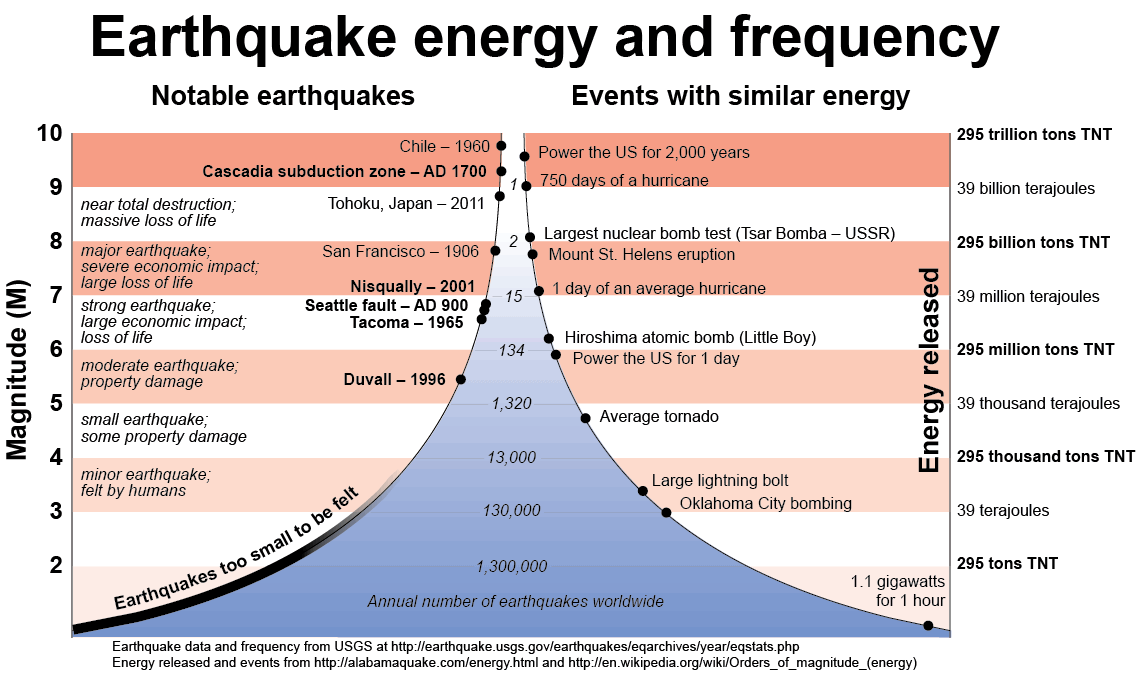
Earthquake Magnitude How Scientists Decide Weathernation

Intensity & Magnitude Of Earthquake Youtube
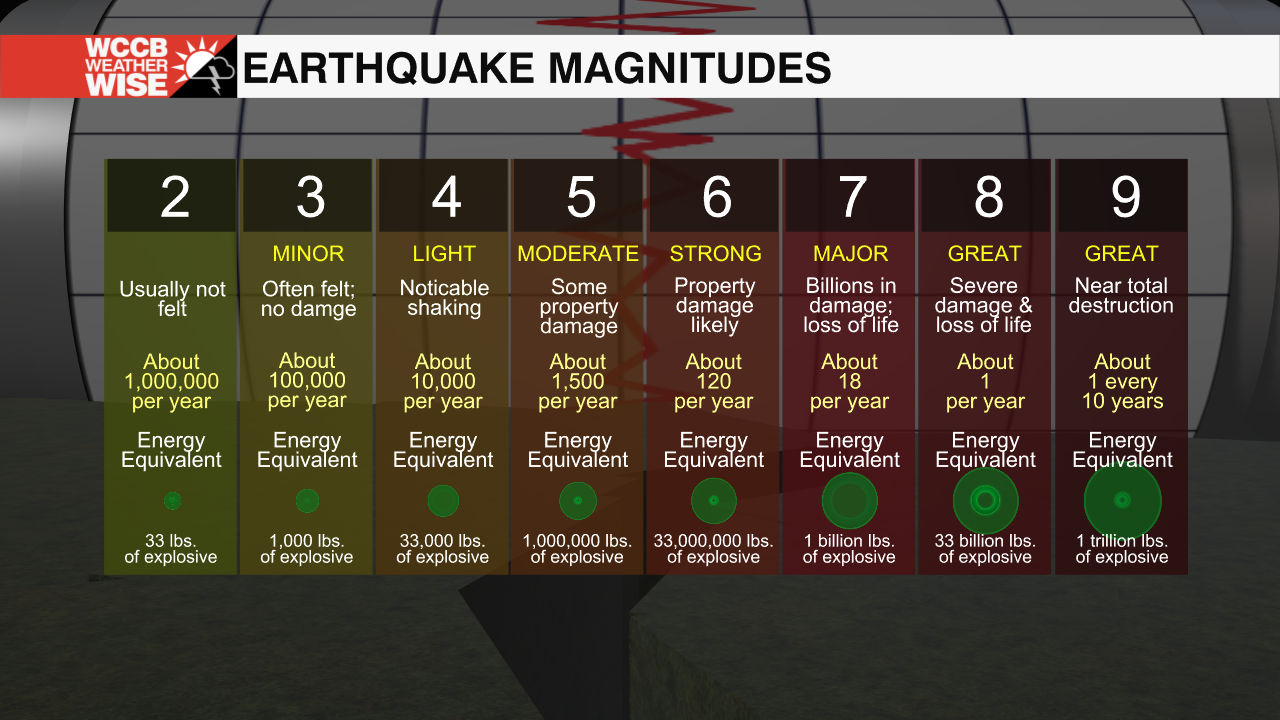
Earthquake Magnitudes 1607440198038 Wccb Charlotte’s Cw
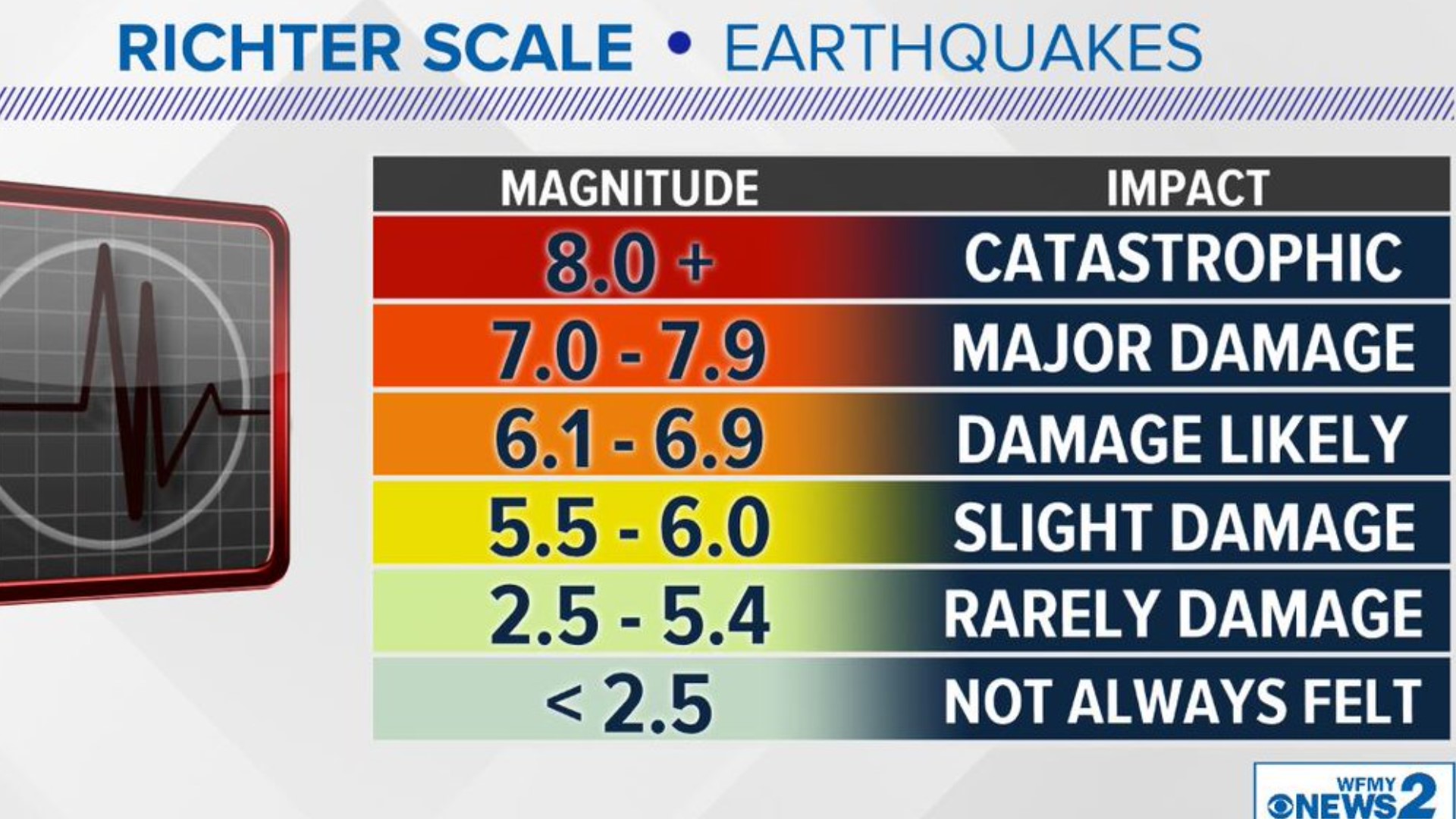
How Far Can A 7 1 Earthquake Be Felt The Earth Images
